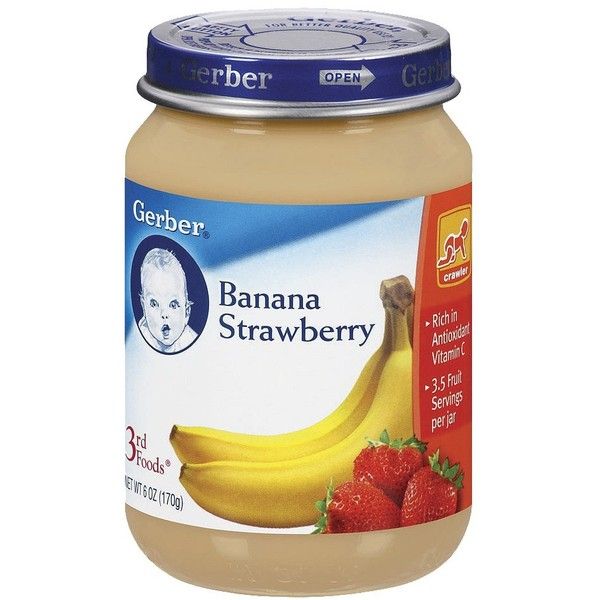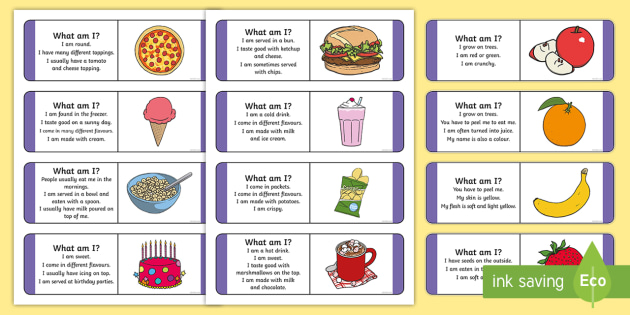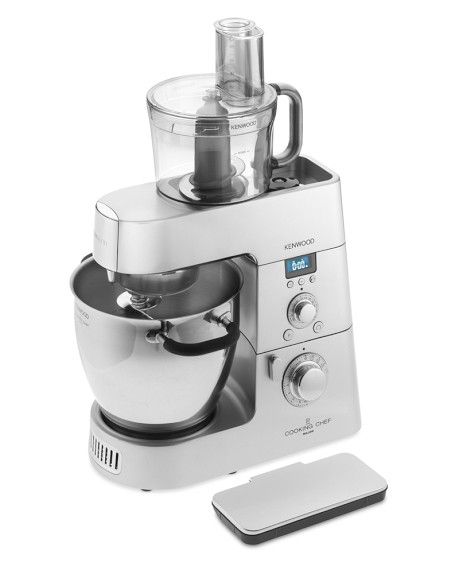Healthy food for 16 month old baby
Top 10 Ideas For 16 Months Baby Food
Nutritious cereals, fruits, and vegetables are needed to support your growing baby.
Image : Shutterstock
Most first-time moms are unsettled about their little one’s eating patterns. Having a 16-month-old baby fuss around with food frequently could leave you agitated. Introducing new foodstuffs by experimenting with food ideas for 16 months babies could be a great way to feed them nutritious and delicious food. At 16 months, your baby is rapidly growing, and their energy levels are soaring. However, with their intuitive minds driving them to explore their surroundings, it is not easy to have them sit calmly and finish their meals. Hence, it may be challenging for parents to maintain a balanced diet. Read on as we share some food ideas to help you feed your 16-month-old.
1. Grains
From pasta to brown bread, there are a whole lot of grain choices to include in your baby’s meal plans. Whole grain muffins will make quick breakfast and snack option for your baby. You can also sneak in extra fruits while preparing muffins. Cut out sandwich with a pastry or cookie cutter in interesting shapes to make it more appealing. Animals, stars, dinosaurs, and hearts are all fun options.
2. Milk
Image: Shutterstock
After your baby’s first birthday, you can continue breastfeeding him if you want. Or you can introduce him to cow’s milk. But give the milk in a cup, not a bottle. You don’t need to give him formula milk. Give your child a minimum of 350 to 400 ml milk every day. Milk does play an important role in your baby’s growth, but don’t give him more than the required amount. It may reduce his appetite for solid foods. It is better if he obtains all the nutrients from a varied diet. The best 16 months baby foods are excellent to feed. It’s essential that they get vitamin D and calcium in their daily diet. You may consult your pediatrician to know about the dairy milk alternatives.
Related: 7-Month-Old Baby's Food: Solids, Food Chart And Recipes
3.
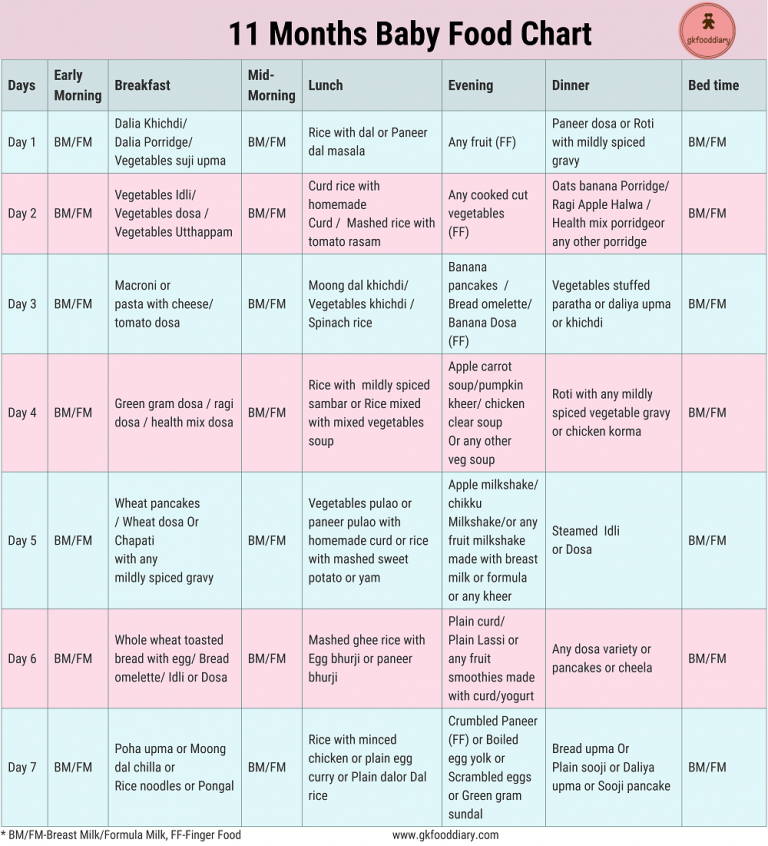 Yogurt
YogurtIf your baby does not like milk, then you can offer him some yogurt. Three servings of yogurt a day are enough for the development of a 16-month-old baby. Mix yogurt with his favorite fruit puree to serve as a delicious snack.
4. Fruits
The different hues, aromas, textures, tastes, shapes and sizes of fruits are sure to appeal to your toddler. So serve him a new fruit every day to tantalize his taste buds in a healthy way. You can offer him the goodness of seasonal fruits.
5. Poultry
Image: Shutterstock
Almost, 15% kids under three years of age do not get enough iron. Hence, it is important to include iron-rich foods in your baby’s diet. Poultry is an excellent source of iron and is a sure shot hit among children. Go ahead and explore some chicken recipes that will make your toddler drool.
Related: Chicken For Babies: Nutritious Recipes And Health Benefits
6. Vegetables
Veggies are an essential source of vitamins, minerals, and dietary fiber.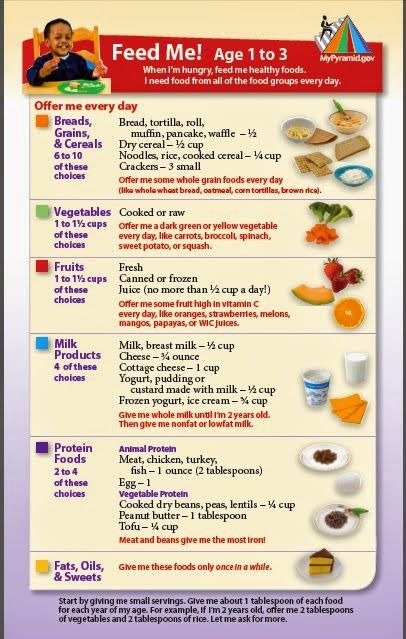 Adding vegetables to your baby’s diet will work wonders for his immunity and protect him from various infections and illnesses. You can also prepare vegetable stock and add it to the different baby foods you prepare for your little one.
Adding vegetables to your baby’s diet will work wonders for his immunity and protect him from various infections and illnesses. You can also prepare vegetable stock and add it to the different baby foods you prepare for your little one.
7. Beans And Legumes
Beans and Legumes are a rich source of protein, iron, dietary fiber, and B vitamins. You can serve your toddler baked beans for breakfast or lentil soup at dinner.
8. Eggs
Eggs are a powerhouse of proteins and other essential nutrients. You can serve this versatile food in various forms like hard-boiled eggs or egg scramble. Eggs are so healthy and yummy that you would want them to be a part of your toddler’s diet for years to come. Eggs can give so many 16 month old baby food recipes.
9. Fish
Your baby’s brain needs essential fats like EPA and omega three fatty acids to develop well. These healthy fats come mainly from fish. So at this stage, you must make fish an important part of your baby’s diet. Choose fishes that contain minimal mercury like Herring, Atlantic mackerel and salmon for your baby. Remember to remove all the tiny bones while feeding your baby.
Choose fishes that contain minimal mercury like Herring, Atlantic mackerel and salmon for your baby. Remember to remove all the tiny bones while feeding your baby.
Related: Fish Oil For Babies: Safety, Health Benefits And Side Effects
10. Porridge
Image: Shutterstock
Porridge will make a highly nutritious breakfast for your baby. It is an excellent source of nutrients like carbohydrates, proteins, and dietary fiber. Moreover, it will keep his little tummy full for a couple of hours and keep crankiness at bay.
1. How do I get my 16-month-old to eat?
Make mealtimes healthy; involve your toddler in meal preparation; avoid punishing them if they refuse to eat; do not bribe them with treats for healthy food; serve them variety; feed them family food; let them explore the food on the plate with their hands; and follow their lead to help your child eat more (1).
2. How much food should I feed my 16-month-old baby?
The following table explains the average daily intake requirement for a toddler (2).
| Food group | Servings per day | One serving equals |
| Grains | 6 | Bread (¼ to ½ slice), cooked rice or pasta (4 tablespoons), dry cereals (¼ cup), crackers (1 or 2) |
| Vegetables | 2 to 3 | Cooked veggies (1 tablespoon for each year of age) |
| Fruits | 2 to 3 | Cooked fruit (¼ cup), fresh fruit (½ piece) and fresh juice (¼ to ½ cup) |
| Dairy | 2 to 3 | Milk(½ cup), cheese (1-inch cube), yogurt(½ cup) |
| Protein( tofu, egg, fish, meat, poultry) | 2 | 1 oz of meat and ½ egg(yolk and white) |
| Legumes | 2 | Soaked and cooked (⅛ cup) |
3. What foods should toddlers not eat?
Avoid giving slippery foods such as candy, cough drops, grapes, and large pieces of meat, small and hard foods, such as seeds, nuts, popcorn, raisins, raw carrots, and other sticky foods such as marshmallows and peanut butter to your toddlers. While some foods may cause choking hazards, others might trigger allergies (3).
While some foods may cause choking hazards, others might trigger allergies (3).
4. How much milk should my 16-month-old drink?
Your toddler should get about 16 to 24 ounces of full-fat milk daily (4).
These energy and nutrient-dense 16-month-baby food ideas could help you add different flavors, vitamins, and minerals to your baby’s diet. Incorporate various grains, dairy products, eggs, fruits, and vegetables into your baby’s meals for a balanced diet. Try giving them whole grains or boiled eggs for breakfast or snack time, or make a wholesome meal with various veggies for lunch and dinner. You may try customizing the recipes as per your toddler’s age and taste preferences. However, it is wise to seek a pediatrician’s advice before adding a new food variety to your tot’s diet.
References:
MomJunction's articles are written after analyzing the research works of expert authors and institutions. Our references consist of resources established by authorities in their respective fields.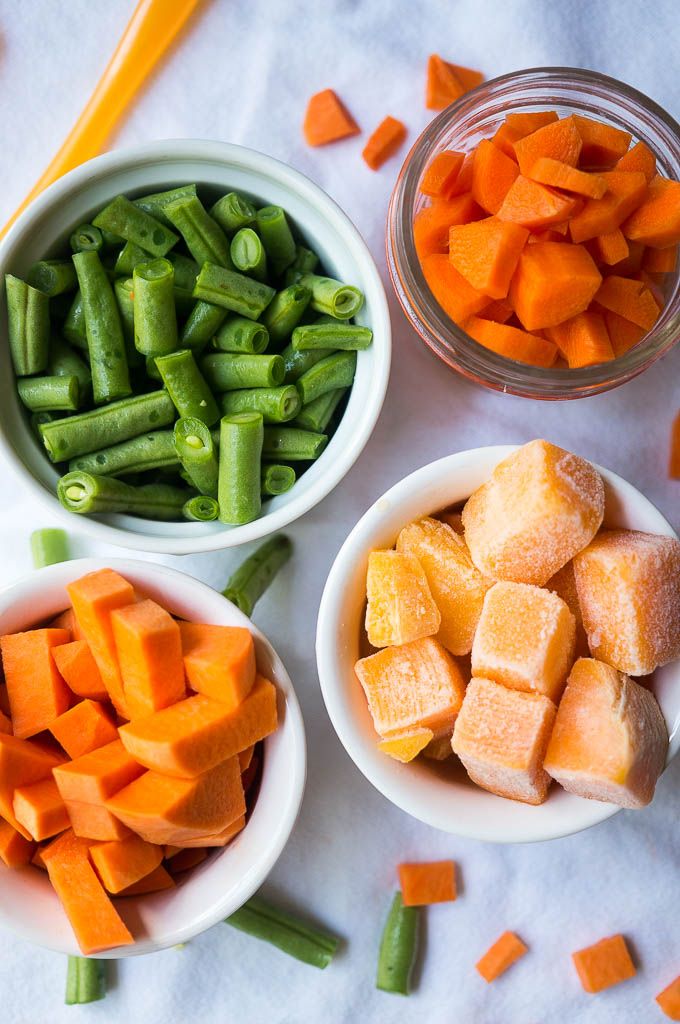 You can learn more about the authenticity of the information we present in our editorial policy.
You can learn more about the authenticity of the information we present in our editorial policy.
- Toddler not eating? Ideas and tips
https://raisingchildren.net.au/toddlers/nutrition-fitness/common-concerns/toddler-not-eating - Serving Sizes for Toddlers
https://www.healthychildren.org/English/ages-stages/toddler/nutrition/Pages/Serving-Sizes-for-Toddlers.aspx - Feeding Your Toddler – Ages 1 to 3 Years
https://my.clevelandclinic.org/health/articles/13400-feeding-your-toddler—ages-1-to-3-years - Feeding Your Baby and Toddler (Birth to Age Two)
https://www.mottchildren.org/posts/your-child/feeding-your-baby-toddler#:~:text=Your%20toddler%20should%20get%2016enough%20nutrients%20from%20other%20foods.
The following two tabs change content below.
- Reviewer
- Author
Jessica Albert is a passionate writer who seeks to connect with her readers through wit and charm.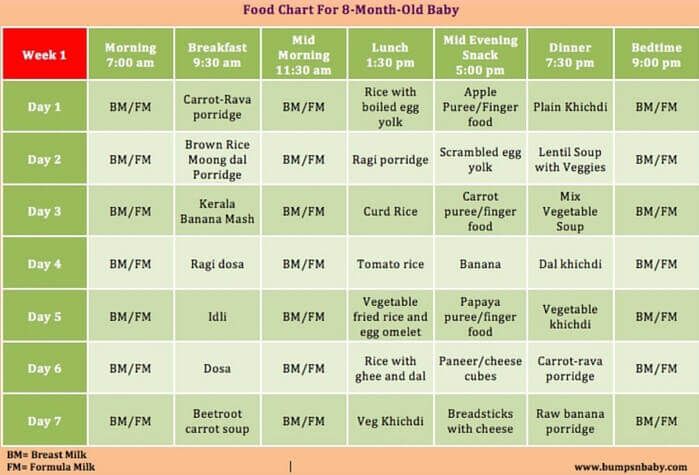 Her work aims to invoke curiosity and keep the readers engaged through and through. She has prior experience working with magazines and e-commerce establishments as a content marketer and editor. Being a mother herself, she puts all her knowledge into creating content about...
Her work aims to invoke curiosity and keep the readers engaged through and through. She has prior experience working with magazines and e-commerce establishments as a content marketer and editor. Being a mother herself, she puts all her knowledge into creating content about...
View Profile ›
Dr. Misha Yajnik is an American Board Certified general pediatrician practicing in the US. She did her undergraduate studies at Youngstown State University in Ohio and obtained her MD degree from Ross University School of Medicine in Dominica. With over a decade of experience with children from newborns to adolescents, her special interest lies in helping parents navigate the difficulties...
View Profile ›
Is It Safe To Eat Flax Seeds During Pregnancy?
Is It Safe To Eat Flax Seeds During Pregnancy?
Is It Safe To Eat Pears During Pregnancy?
Is It Safe To Eat Pears During Pregnancy?
Is It Safe To Drink Cranberry Juice During Pregnancy?
Is It Safe To Drink Cranberry Juice During Pregnancy?
Coconut Water for Babies: Safety, Health Benefits, And Side Effects
Coconut Water for Babies: Safety, Health Benefits, And Side Effects
Honey During Pregnancy: Safety, Benefits And Side Effects
Honey During Pregnancy: Safety, Benefits And Side Effects
Is It Safe To Eat Oranges During Pregnancy?
Is It Safe To Eat Oranges During Pregnancy?
Green Tea In Pregnancy: 6 Benefits And 3 Side Effects
Green Tea In Pregnancy: 6 Benefits And 3 Side Effects
12 Healthy Homemade Energy Drinks To Have When Pregnant
12 Healthy Homemade Energy Drinks To Have When Pregnant
15 High-Fiber Foods To Keep Constipation At Bay In Pregnancy
15 High-Fiber Foods To Keep Constipation At Bay In Pregnancy
Recipes, Food Ideas & Tips
Mothers, especially first-time moms, tend to get jittery when it comes to deciding what to feed their babies. If you have a 16-month-old toddler, who relishes an apple one day and refuses to eat it the next day, you are bound to get frustrated. The trick is to introduce new foods to your toddler so that she doesn’t get bored of eating the same food. Keep her diet balanced and introduce her to new tastes and food textures. If you want to know what foods you can give to a 16-month-old toddler and what kind of feeding schedule you should follow for him, then read this article. We also have some meal ideas for 16-month-old babies, which you experiment with for your little one.
If you have a 16-month-old toddler, who relishes an apple one day and refuses to eat it the next day, you are bound to get frustrated. The trick is to introduce new foods to your toddler so that she doesn’t get bored of eating the same food. Keep her diet balanced and introduce her to new tastes and food textures. If you want to know what foods you can give to a 16-month-old toddler and what kind of feeding schedule you should follow for him, then read this article. We also have some meal ideas for 16-month-old babies, which you experiment with for your little one.
What to Feed a 16-Month-Old
A toddler must have a balanced meal each day. A healthy diet that consists of all the essential nutrients is a must for toddlers for their healthy growth and development. So here is a list of food that can be given to your 16-month-old baby.
1. Fruits and Vegetables
- Apples
- Banana (healthy for weight gain, contains vital nutrients)
- Orange (rich in vitamin c)
- Grapes
- Potatoes
- Broccoli
- Carrots
2.
 Non-Vegetarian
Non-Vegetarian- Chicken (shredded and boiled)
- Fish
- Eggs
3. Other Food Items
- Rice (boiled)
- Oats
- Milk
- Yoghurt
- Kidney beans (boiled and mashed)
- Legumes
- Whole wheat
- Mashed fruits and vegetables
How Much Should a 16-Month-Old Eat?
At 16 months, a toddler knows quite well what she wants to eat and what she never wants to put in her mouth. Hence, forcing your baby to eat something won’t do any good. But as per the nutritional food chart, you must make sure that she gets about 1000 calories approximately per day. Another good way of knowing how many calories to give to your baby is to add up to 40 calories for every inch of her height.
Feeding Schedule for a 16-Month-Old
Here is a sample feeding schedule for a 16-month-old. We have given some foods that you can include in their meals. Feel free to include other healthy foods in her diet
| Meal Time | Food Name |
| Breakfast (8:00 am – 8:30 am) | Scrambled eggs, oatmeal |
| Lunch (11:30 am -12:00 noon) | Fruits or vegetables, pasta |
| After Nap (3:00 pm -3:30 pm) | Yoghurt, cheese sticks |
| Dinner (6:30 pm -7:00 pm) | Steamed broccoli, chicken |
Drinking milk along with every meal/snack is important for a 16-month-old toddler.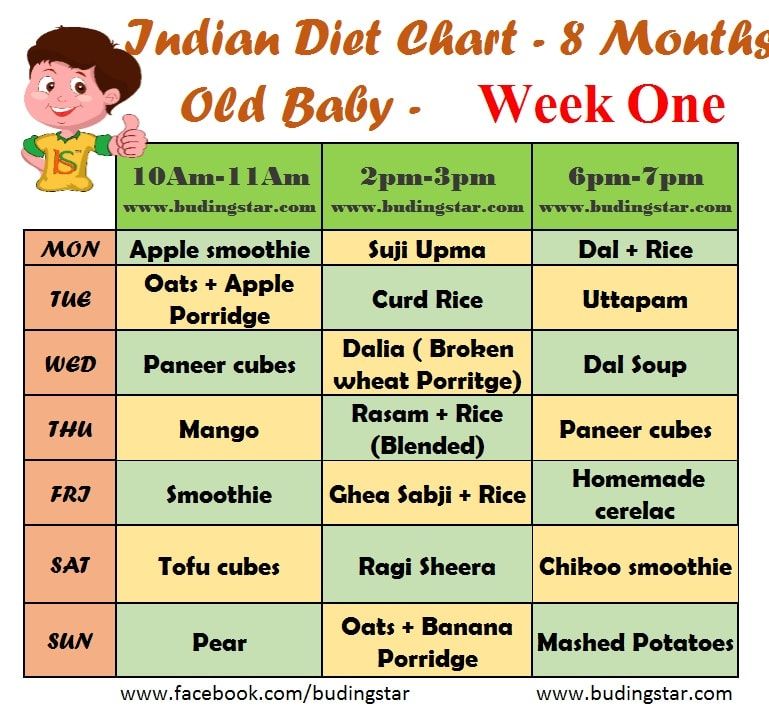 As it will fill her stomach and she won’t ask for unhealthy snacks in between meals. Therefore, giving milk along with every meal to your little one will develop a healthy and good appetite cycle. But how much milk should a toddler take every day? According to paediatricians, a toddler should take 3-4 ounces of milk with every meal or 5-6 ounces of milk along with three main meals.
As it will fill her stomach and she won’t ask for unhealthy snacks in between meals. Therefore, giving milk along with every meal to your little one will develop a healthy and good appetite cycle. But how much milk should a toddler take every day? According to paediatricians, a toddler should take 3-4 ounces of milk with every meal or 5-6 ounces of milk along with three main meals.
Foods to Avoid for a 16-Month-Old Toddler
Listed below are foods that you should not include in your 16-month-old’s food chart.
- Low-fat milk
- Raw vegetables
- Peanuts
- Prawn
- Mutton or beef
- Fish with bones
Food Recipes for a 16-Months-Old Toddler
Cooking something that is nutritious as well as tasty can be quite challenging for parents. To help you with that, here are three food recipes that you can make for your 16-month-old toddler.
1. Green Veggie Fritter
Filled with the goodness of spinach and sweet corn, the tasty green veggie fritter makes for healthy and nutritious finger food for your little one.
Ingredients
- Sweet corn (unsalted) – 1 can
- Spinach (baby leaves) – 5 – 6 no.
- Garlic (crushed) – 1 clove
- Spring onion (chopped) – 1
- Flour (plain) – 50 g
- Baking powder – ½ tsp
- Egg (optional) – 1
- Milk – 50 ml
- Vegetable oil
How to Make
- Take sweet corn, blanched spinach leaves, garlic, chopped spring onion in the food processor and pulse them until done.
- Take the flour in a bowl and add the mix to it. Followed by baking powder and milk. Whisk in the egg and mix well. You will get a thick batter.
- In a pan, heat some vegetable oil.
- Once the oil is hot, drop spoonfuls of batter in it.
- Cook for about a minute or two then flip.
- Press the fritters with the spatula to cook it well. Once they turn light golden, transfer them on to a plate lined with tissue. Let the tissue absorb the excess oil.
- Serve warm.

2. Mini Chicken Shepherd’s Pie
The shepherd’s pie is a great recipe for your little one as it will provide your baby with the much-needed protein required for his healthy growth and development.
Ingredients
- Chicken mince (with some fat) – 100 g
- Chicken stock (low salt) – 150 ml
- Lentils (rinsed and soaked in water) – 25 g
- Onion (finely chopped) – 2 tbsp
- Garlic (crushed) – 1 clove
- Tomato puree – 1 tbsp
- Celery stick (diced) – 2 tbsp
- Yellow pepper (diced) – 3-4 tbsp
- Potato – 300 g
- Courgette (diced) – 3 – 4 tbsp
- Carrot (diced) – 1 cup
- Milk – 25 ml
- Cumin – 1/4th tsp
- Cheddar cheese (grated) – 150 g
- Butter – 25 g
- Vegetable oil – 1 tbsp
How to Make
- Heat some vegetable oil in a saucepan.
- Add in the chopped onions and fry them until cooked properly.

- Then add the carrot, celery, pepper, garlic, and cumin.
- Stir then allow the vegetables to cook for 2-3 minutes.
- Add the chicken mince and mix it well with the vegetables.
- After some time, add the courgette and tomato puree. Allow it to cook for a few minutes.
- Then add the soaked lentils, pour in the chicken stock and put a lid.
- Allow it to simmer in low heat for 35-40 minutes.
- Keep stirring it from time to time.
- Boil the potatoes until they are well cooked.
- Peel the potatoes and mash them with milk and butter.
- Once the chicken mince and vegetable mix are cooked, pour it in a blender and make a fine puree.
- Pour the puree into the ramekins and top it with mashed potatoes and grated cheddar cheese.
- Bake it for 30 minutes until the top becomes golden and starts bubbling at the sides.
- Allow it to cool before serving it to your little one.
3. Apple and Carrot Oatmeal Cookies
Packed with the goodness of apple, carrot, and oatmeal, this apple and carrot oatmeal cookie is one of the healthiest snack ideas for toddlers.
Ingredients
- Flour – 1 cup
- Oats – 1 cup
- Carrot (grated) – ½ cup
- Apples (grated) – ½ cup
- Raisins (finely chopped)
- Sunflower seeds (roughly crushed) – 1/4th cup
- Cinnamon powder – ½ tsp
- Water
How to Make
- In a bowl, take the flour and add the oats, grated apple and carrot, and raisins to it.
- Add in the sunflower seeds and cinnamon powder. Slowly add water to knead a dough.
- Flatten the dough using a rolling pin and cut out circular shapes using a cookie cutter.
- Line a baking tray with parchment paper and place the cookies on it.
- Bake for 10-12 minutes at a temperature of 350 degrees Fahrenheit.
Feeding Tips for Parents
Here are some tips that you must follow when feeding your toddler.
- Cut fruits and vegetables into small pieces of not more than half an inch before being giving it to your toddler.
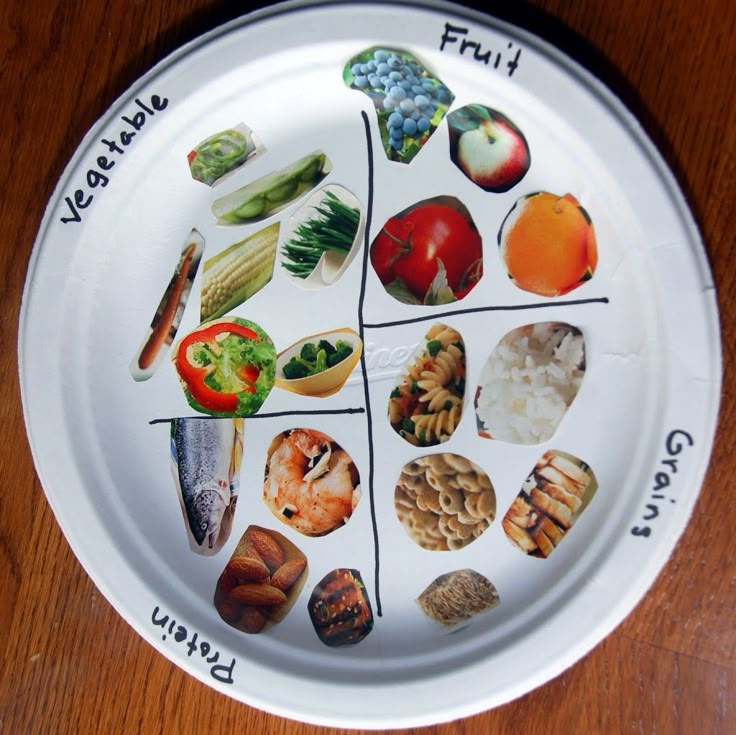
- Remove the seeds and pits in the fruits before giving them to your baby.
- Toddlers should be given nuts after breaking them into small pieces.
- Avoid giving fruits and vegetables that are cut into very small pieces or your baby might choke on them.
- Hard foods like popcorns, potato chips or candies should not be given since as they could prove to be a choking hazard.
- Chewing gum, sticky jellies, dried fruits, and marshmallows can get caught in your baby’s throat and therefore, it is best to avoid them.
- Nut butter if taken in dollops can be difficult to swallow for babies. Therefore, always give nut butter to your baby by spreading a thin layer on a cracker or a slice of bread. Another way is to mix them in yoghurt or apple sauce before serving them to your baby.
Treat your baby to the above-given recipes and make a sample meal plan keeping in mind the foods that should be avoided. In no time you will see your little one enjoying every meal!
Also Read:
Starters Guide on Baby Food and Nutrition
DIY Baby Food Recipes
Best Baby Foods You Should Give To Your Kid
Proper nutrition of the child from birth to a year
Child nutrition, Diet
Mother's milk is an ideal food that allows you to ensure the full development of the baby during the first six months. This is the main food of a monthly baby, and the next 6 months too. At this age, babies do not need to introduce additional fluid in the form of water, herbal teas, teas or juices. All needs will be met by breast milk. With it, the crumbs receive all the necessary, biologically active and nutrients. Mother's milk is ideally adapted to the peculiarities of digestion and metabolism of each child. It contains in the right amount not only carbohydrates, fats, protein, but also such important substances as carnitine, taurine, inositol, polyamines, which are needed for the formation and development of the baby's nervous system and retinal photoreceptors. nine0003
This is the main food of a monthly baby, and the next 6 months too. At this age, babies do not need to introduce additional fluid in the form of water, herbal teas, teas or juices. All needs will be met by breast milk. With it, the crumbs receive all the necessary, biologically active and nutrients. Mother's milk is ideally adapted to the peculiarities of digestion and metabolism of each child. It contains in the right amount not only carbohydrates, fats, protein, but also such important substances as carnitine, taurine, inositol, polyamines, which are needed for the formation and development of the baby's nervous system and retinal photoreceptors. nine0003
Author: Assistant of the Department of Pediatrics №1 Andrey Pyshnik
Sometimes there is a need for artificial feeding of a child. This happens if a woman, for one reason or another, cannot breastfeed (a complete lack of milk, a serious illness of the baby or the mother herself) or simply does not want to do this.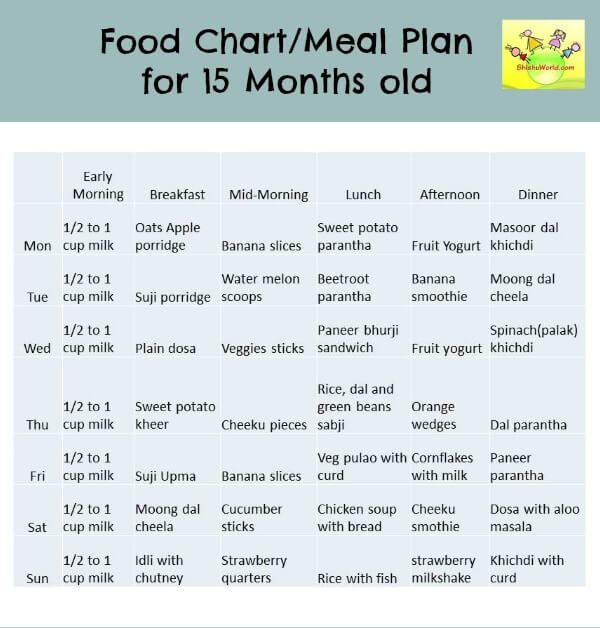 Artificial - this is feeding, in which the baby completely eats the milk formula or the proportion of breast milk is less than 1/5 of the daily volume of food. In this case, you need to choose the most useful formula for the baby. nine0003
Artificial - this is feeding, in which the baby completely eats the milk formula or the proportion of breast milk is less than 1/5 of the daily volume of food. In this case, you need to choose the most useful formula for the baby. nine0003
Diet
The main food of a child from 1 to 3 months is only breast milk. No other products should be given until 5-6 months. The baby quickly grows up, his first teeth begin to erupt. So the body signals that a new food needs to be introduced into the child's diet - complementary foods. In addition, after 6 months, the baby becomes more mobile, so its energy needs increase. Mother's milk can no longer provide them, so the child must receive additional nutrition. nine0003
When introducing complementary foods, it is important to adhere to the following rules:
- New foods should be given when the baby is active, during breakfast or lunch with other family members.
- The baby should be in an upright position on a special highchair or on the mother's lap during feeding.

- Give food from a spoon.
- Each new product should be introduced from a small portion (1 teaspoon), gradually bringing to the desired age volume over 5-7 days. nine0022
- Give complementary foods after a short period of breast milk (or formula if artificial baby).
- To keep the mother lactating, the baby should be breastfed after weaning.
- When introducing a new weaning meal, make sure it has only one ingredient to avoid unpleasant side effects. Give it a few days in a row.
- If your baby refuses solid food, do not force feed him. It is better to try to give another product that differs from the previous one in texture and taste. nine0022
- Food should be homogeneous, freshly cooked, at a temperature of 36-37 °C.
- Do not add salt and spices to complementary foods.
- If there are signs of intolerance to the product (eating disorders, allergies), its administration should be discontinued.
Complementary foods, if artificial feeding of the child is introduced, should be given from 5 months of age, natural - from 6 months.
Menu
Most of the diet of infants consists of mother's milk. But after 5-6 months, you need to expand the menu of the crumbs, gradually accustoming him to other foods. In the second half of life, breast milk can no longer meet all the needs of a growing body in the micro and macro elements it needs. nine0003
Monthly nutrition of a child looks like this:
- 6 months. Iron-enriched cereals (buckwheat, rice, corn) are given for signs of anemia, fruit and vegetable purees. They should be given 1-2 times a day, the volume gradually increases. Porridges from several cereals can be introduced when the baby has already met each of them separately. You can add fruits and vegetables to them. It is forbidden to use cereals for adults for complementary foods.
- 6-9 months. Meat is introduced: chicken, beef, rabbit, lean pork, turkey. First, it should be given in crushed form, starting with 5 grams, and over time it can be in pieces. Children under one year should not be given sausages and other sausages, as they contain a lot of salt.
 At this age, cottage cheese is also introduced. It is important to remember that you should not give two new products at the same time, it is important that the baby first gets used to one well. nine0022
At this age, cottage cheese is also introduced. It is important to remember that you should not give two new products at the same time, it is important that the baby first gets used to one well. nine0022 - Egg yolk is introduced at 7 months of age. At first it is given in the amount of 1/8, with a gradual increase to half by 10-12 months.
- At 8-10 months, breastfeeding complementary foods include the introduction of fish puree (from 10 grams).
- 9-12 months. The child may actively try larger pieces of food.
- After 12 months, the baby can be given egg white, but it is important to remember that it often provokes allergies. Therefore, if you make up the optimal nutrition for children, the menu should not contain it until a year old. nine0022
When complementary foods are introduced, fruits are best given after vegetables, because often, after tasting the sweet taste, children refuse vegetables. You can mix several ingredients if the baby is well accustomed to each separately.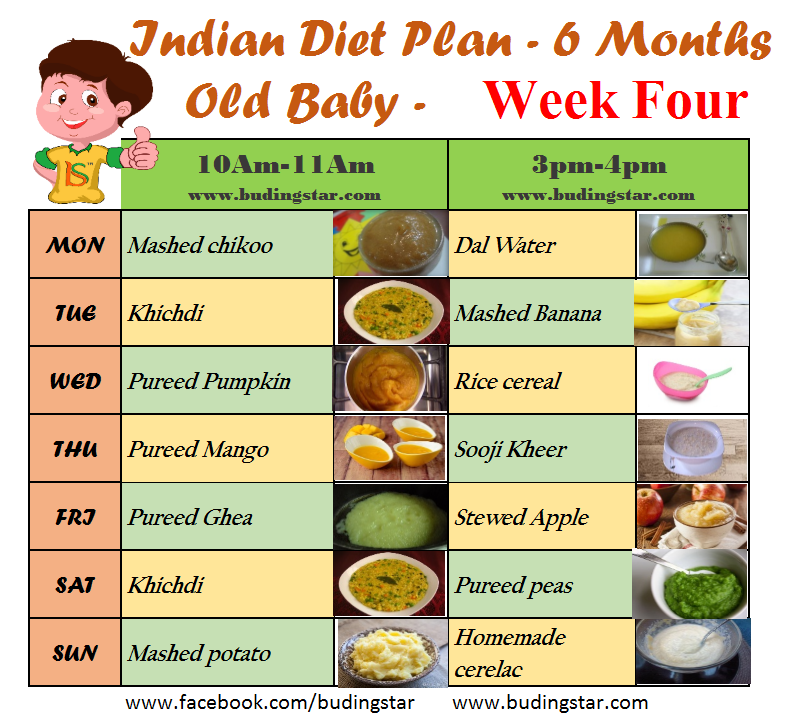 You can not enter spicy, spicy vegetables and fruits.
You can not enter spicy, spicy vegetables and fruits.
How often should I give complementary foods? A child at 8 months should be given 3 times a day, at 9-11 months - 4 times. From 12 months you can use a drinking cup.
Diet
The duration of breastfeeding is approximately 15-20 minutes. More often in the first 5 minutes, the baby sucks out the maximum part of the required volume of milk. Then he sucks more slowly, maybe dozing a little. Therefore, you should ensure that the baby is actively sucking, if he falls asleep, wake him up and continue feeding. nine0003
The World Health Organization recommends that proper nutrition for children under 1 year of age should be provided on demand. But this also needs to be approached wisely. Babies have a natural sucking reflex, so you don't need to breastfeed every time he cries. After all, the baby will take it reflexively. Try to analyze the behavior of your baby in order to gradually develop the optimal diet for an infant that is convenient for you.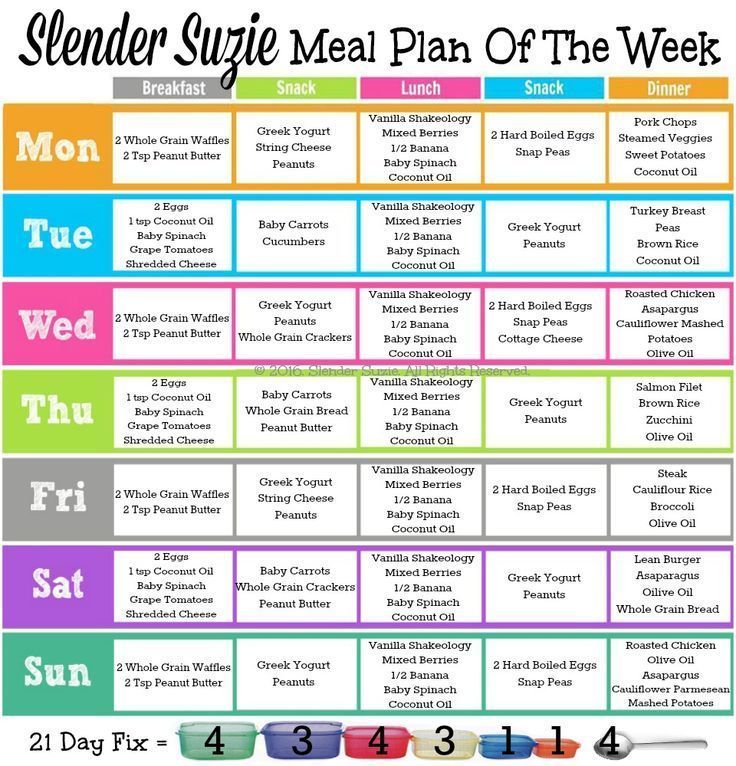 Approximately you will have to feed the baby every 2.5-3 hours. If after eating he is active and energetic, then this is quite enough. The approximate frequency of feeding children 1-3 months - 7 times a day, 3-5 months - 6 times, and after 5 months the child eats five times. nine0003
Approximately you will have to feed the baby every 2.5-3 hours. If after eating he is active and energetic, then this is quite enough. The approximate frequency of feeding children 1-3 months - 7 times a day, 3-5 months - 6 times, and after 5 months the child eats five times. nine0003
The amount of milk consumed per day depends on age. The first 3 days from birth is 40-200 grams, after 7 days - about 400 grams per day, at the end of 2 weeks - 500 grams, at the end of 1 month - about 600 grams, at 2 months - 800 grams. Then, up to a year, the total daily volume of food should not exceed 1 liter.
Peculiarities of a 1-year-old baby's nutrition
To get all the nutrients necessary for the body, a 1-year-old baby should continue feeding with breast milk or an adapted formula, gradually expanding the diet. An obligatory component of food should always be fruits and vegetables. nine0003
Feeding should be done at a frequency of 5 times a day. Please note, when developing a child's nutrition per year, the menu must necessarily contain eggs, fish and meat dishes, cottage cheese and sour-milk products, fats, grains, vegetables and fruits.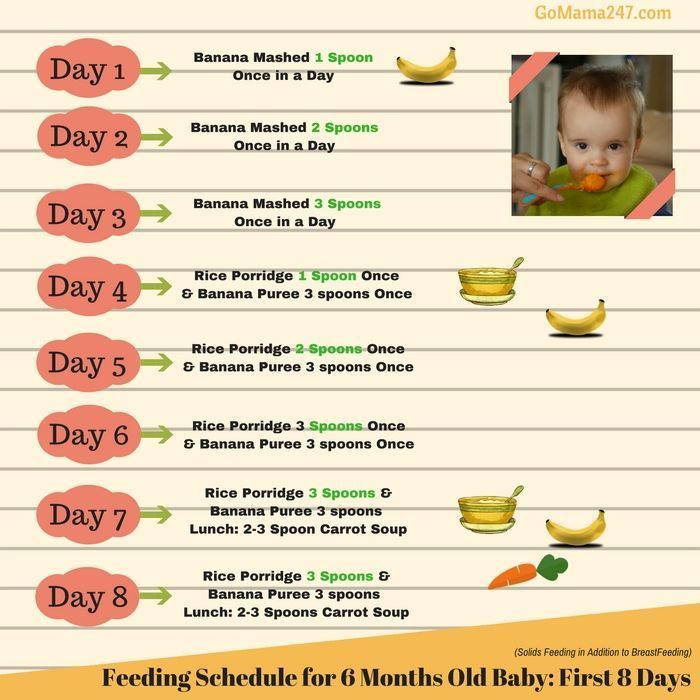 It is advisable to introduce vegetable and butter into the diet as a dressing for cereals, mashed potatoes, salads. Spreads and margarines are strictly prohibited!
It is advisable to introduce vegetable and butter into the diet as a dressing for cereals, mashed potatoes, salads. Spreads and margarines are strictly prohibited!
A small amount of sugar should be included in the diet (about 35 grams). Consider the content of the products to select the appropriate "sweets". For example, you can try to enter: marmalade, dried fruits, natural honey, various cookies. Fast foods are strictly prohibited, as they contain many different flavors, dyes, preservatives and other harmful substances that contribute to the allergization of the body. As a result, there is a problem of excess weight and all kinds of endocrine disorders. nine0003
A child's nutrition per year should contribute to the formation of the correct behavior of the baby during meals. He should eat regularly, 4-5 times a day, without all sorts of snacks. At this age, strong tea should be avoided, as such drinks tend to flush out iron from the body. The amount of food should be appropriate for the weight and age of the child.
Sources:
- Baby food. Complete guide. Author: Natalia Pavlova, Galina Lazareva, Elvira Mullayarova, Vera Podkolzina, S. Sizikumova, O. Anashkina, G. Trofimova. Publisher: Eksmo. Series of books: A complete medical guide for the whole family. Language: Russian, Year of publication 2008. Number of pages: 768 p.
- The results of the daily follow-up of the applied menu for 7 days of healthy children for 1 to 3 years: method. .:TOV “People in white”, 2014-24p.
- Features of diagnostics and approach to judicious and preventive eating of children of early age with allergy to cow's milk protein: method. recommended / [O.G. nine0010
- Ivakhnenko O.S.S. Zalezhnіst Vinikennya that manifested alargіy hour of the introduction of not modifiable cows at the dihokh Rockivas for the tribute of the Danish epyddemiral pre-Sligennia // Problems of Klinichny Pedari -16).-S.87-92.
- NICE recommendation.
Diagnosis of food allergy in children and adults // Children's doctor.-2011.-№2(9).-S.77-80.
- Child nutrition, Diet Child nutrition from 0 to 9 years0008
- All baby food
We make a menu for a baby after a year. What to feed a child after a year: advice to parents
Young parents who have a baby after a year often have questions - what to feed the child next?
Contents:
- Is a nutritionist a mother?
- Feeding a child per year: age specifics of nutrition
- Sample children's menu for a day
- Children's menu for a week. Option one
- Menu for the week. Option two
Young parents who have a baby after a year old often have questions - what to feed the child next? Nutrition guides are full of complementary feeding schemes, but less attention is paid to the nutrition of one-year-old and two-year-old children. But after all, mom and dad need not only to know the principles of nutrition for the crumbs, but also to correctly compose his menu for the day, week or even month! It is necessary to plan the purchase of products, methods of preparation and even preparations for the future.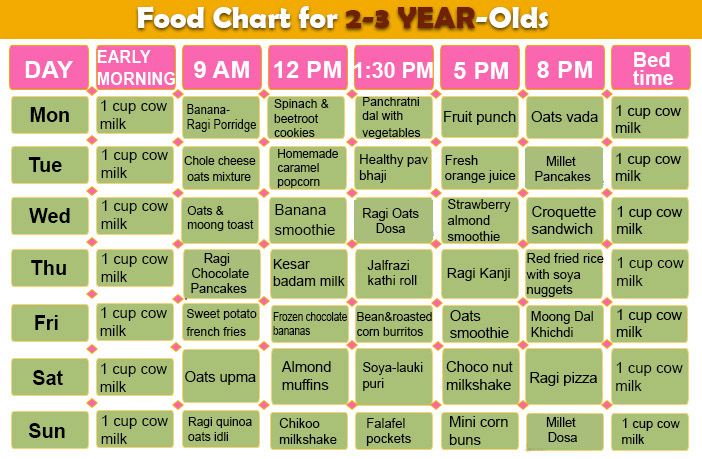 Let's pay close attention to the menu of the crumbs from a year to about two years. nine0003
Let's pay close attention to the menu of the crumbs from a year to about two years. nine0003
Important note: the recommendations of this article can only be fully applied to children whose mothers adhered to the pediatric complementary feeding regimen and gradually replaced feedings (often with formula, but sometimes with breasts) with certain volumes of "adult" food. Babies who are breastfed on demand are more suitable for pedagogical complementary foods, which are gaining more and more supporters. These children may not be able to handle the given portion sizes - however, their mothers may well adopt the recipes and general recommendations of this article. nine0003
Nutritionist - mother?
The principles of baby food for a child of 12 months remain the same as in the second half of the first year - a gradual expansion of the set of products and a gradual change in the degree of grinding and processing of the product.
For the proper organization of nutrition for your baby, it is worth considering and compiling an indicative menu for 7-10 days in advance. At first glance, this seems complicated - but let's try, using certain knowledge about products and their daily needs, to create approximate layouts. nine0003
At first glance, this seems complicated - but let's try, using certain knowledge about products and their daily needs, to create approximate layouts. nine0003
When compiling the menu, you need to take into account the norms of daily consumption of products - that is, which products must be given to the baby every day, and which - with a certain frequency. For simplicity, we will make a calculation for a week - therefore, we will distribute the products by day. Daily products are calculated based on the daily allowance, multiplying it by 7 days of the week, the rest - based on the number of doses.
Every day the baby receives milk and dairy products, butter, bread, vegetables, cereals, on some days of the week they distribute, for example, cottage cheese, cheese, fish, sour cream, eggs. Meat and fish are recommended to be given at least 5-6 times a week - that is, 4 times meat and 1-2 times fish. nine0003
Sometimes it happens that it is not possible to cook all the products planned in the menu. Then you have to resort to replacing the product with an approximately equivalent one. When replacing, it is necessary to take into account the calorie content and nutritional value of the product - that is, replace carbohydrate foods with them, fats with other fats, proteins with other proteins. For example, interchangeable carbohydrates are bread, bakery products, pasta, cereals. From proteins, milk, cottage cheese, meat, fish, cheese are replaceable. From vegetables - potatoes, beets, cabbage, carrots, etc. Fats are replaceable both vegetable and animal. However, by the end of the week, all quantities of replaced products are equalized. nine0003
Then you have to resort to replacing the product with an approximately equivalent one. When replacing, it is necessary to take into account the calorie content and nutritional value of the product - that is, replace carbohydrate foods with them, fats with other fats, proteins with other proteins. For example, interchangeable carbohydrates are bread, bakery products, pasta, cereals. From proteins, milk, cottage cheese, meat, fish, cheese are replaceable. From vegetables - potatoes, beets, cabbage, carrots, etc. Fats are replaceable both vegetable and animal. However, by the end of the week, all quantities of replaced products are equalized. nine0003
Mandatory and indispensable in the baby's diet should be daily milk, butter, vegetables, bakery products, other products can be varied by day of the week.
In addition, when planning a baby’s menu, it is worth remembering to take into account boiling and product losses, taking their volumes into account cooking - for example, fish loses up to 40% of weight during cooking, meat - up to 30%, vegetables lose up to 35% during processing % of its raw weight.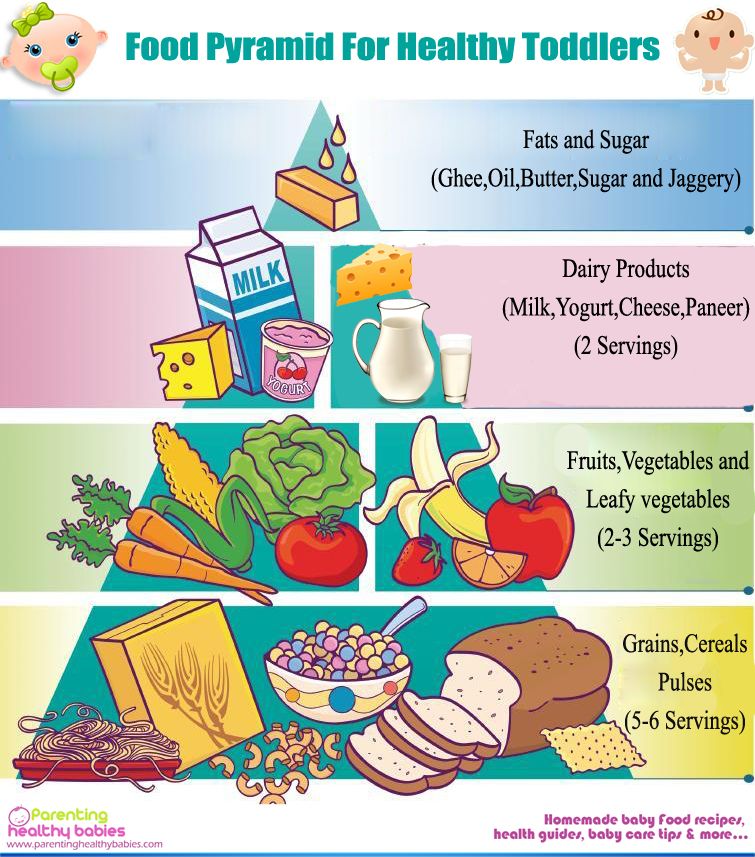
Feeding a child per year: age specifics of nutrition
In the first months of the second year of life, the main components of food are pureed or mashed with a fork puree and cereals. But the degree of their grinding should gradually change - from the beginning of the second year, you can switch to highly boiled and diluted and boiled with milk porridge, side dishes from heavily boiled vegetables or cereals - buckwheat, rice, wheat, corn or millet. Closer to one and a half years, with the appearance of 8-10 or more teeth, it is necessary to start giving more dense food - steam cutlets, meatballs, dark bread. nine0003
In addition, it must be remembered that up to a year and a half, the acidity of gastric juice is still insufficient, and therefore delicate proteins, mainly milk proteins, should prevail in the diet. It is advisable not to use confectionery and sugar in the diet of children under 2-3 years old, however, you can give dry cookies, homemade jams, marmalade, jams and honey from about a year and a half if there is no allergy.
5 or 4 meals of 200-225 ml each are considered optimal.
There are certain rules to follow when feeding babies:
- For breakfast you can have a variety of cereals, vegetables, eggs, cottage cheese, meat, fish. From liquid dishes - milk, weak tea, herbal teas, fruit drinks;
- Lunch should consist of any kind of soup - meat or vegetable, second course - meat, fish or vegetable with garnish and sweet - juices, fruits, compotes, mousses, soufflé;
- closer to a year and a half, a light snack is recommended before the first course - salad;
- for an afternoon snack, preferably a liquid, milky, sour dish with cookies and fruit is better; nine0022
- maximum protein in the first half of the day - breakfast and lunch;
- dinner is built on the principle of breakfast;
- it is obligatory to have a hot dish at each feeding;
- after eating, the baby should drink.

Sample children's menu for the day
Here are menu options developed by various doctors and nutrition guides. You can use one of them or create your own menu based on the standard ones. nine0003
For example, pediatrician Ezhova N.V. in his guide "Nutrition for children from birth to three years" offers the following menu options for the day (with some additions and changes by the author of the article).
Age 1-1 year 3 months
Breakfast Tea with milk or milk - 100 ml
Bread with butter - 30 g + 3 g
Lunch
Vegetable or meat soup - 100 g
Meat puree or cutlet - 40 g
Garnish (vegetable, pasta, cereal) — 50 g
Compote or fruit juice - 100 ml
Snack
Cottage cheese - 30 g
Kefir or milk - 150 g
Bun or biscuit - 10 g
Fruit - 50 g
Dinner
Vegetable puree or porridge - 150 g
Tea with milk - 50 ml
Second dinner (can be replaced with second breakfast if desired)
Kefir, milk, biolact, baby yoghurt (optional) - 150 ml
Age 1 year 3 months - 1 year 6 months
Breakfast
9025 Tea with milk or milk - 150 mlBread with butter - 40 g + 5 g
Lunch
Vegetable salad - 10 g
Soup — 100 ml
Meat cutlet (fish, liver, chicken) - 50 g
Garnish (vegetable, cereal, vermicelli) - 80 g
Compote (fruit drink, fruit juice) — 100 ml
Snack
Cottage cheese — 50 g
Fruit — 100 g
Tea with biscuits 150 g + 10 g
Dinner
Vegetable puree or porridge - 150 g
Tea with milk — 150 ml
For age 1 year 6 months — 1 year 9 months
Breakfast
Grated carrot (fruit salad, half an egg) — 30 g 9029 Milk porridge - 150 g
Tea with milk or milk - 150 g
Bread with butter 60 g + 5 g
Lunch
Vegetable salad - 40 g
Soup (shchi, borsch) — 100 g
Meat puree or cutlet — 60 g
Garnish (vegetable, cereal) — 100 g
Fruit juice - 100 ml
Afternoon snack
Kefir with a bun - 200 g
Fruit 100 g
Dinner
Vegetable puree or porridge - 200 g
Milk (kefir, yogurt) - 150 g
For the age of 1 year 9 months - 2 years
Breakfast
Milk porridge (noodles, vermicelli) - 150 g
Non-natural coffee, or tea with milk, or milk - 150 g
Roll with butter, jam or cheese 70 + 3 g
Lunch
Vegetable salad - fresh, pickled - 30-40 g
Soup, cabbage soup or borsch — 50-100 g
Meat or fish cutlet — 50 g
Garnish (vegetable, cereal) 100 g
Compote — 150 g
Afternoon snack
Kefir with cookies — 150 g
Fruit - 50 g
Dinner
Vegetable dish - 150 g
Kissel or milk - 100 g
As you can see, the menu is not without flaws. Here are approximate servings and volumes, it can only be used as a general guide. Based on it, taking as a basis an approximate layout menu from the pediatrician's reference book (District pediatrician. Reference guide. - Phoenix, 2008) and making practical adjustments, we developed several menu options for the week. nine0003
Children's menu for the week. Option one
Day one
Breakfast — buckwheat porridge, tea and bread and butter.
Lunch - cucumber salad, cabbage soup, meatballs with vermicelli, dried fruit compote, bread.
Snack - kefir, cookies - 2 pcs., baked apple.
Dinner - carrot-apple casserole, milk, wheat bread with cheese.
Let's have a snack either between lunch and breakfast, or at night - a glass of biolact, milk (100-150 ml) or cottage cheese (50 g). nine0003
Second day
Breakfast — rice porridge, tea with milk, bread with cheese.
Lunch - beetroot salad, vegetable soup, meat cutlet with mashed potatoes, compote, bread.
Snack - cottage cheese, banana.
Dinner - scrambled eggs, stewed cabbage, biolact or yogurt, bread.
Snack - milk with cookies.
Day three
Breakfast — mashed potatoes with half an egg, apple juice, bread with jam.
Lunch - cabbage salad with apple, cabbage soup, mashed meat with buckwheat porridge, apple jelly, dark bread. nine0209 Snack - cottage cheese casserole, milk.
Dinner - semolina porridge, kefir, bread and butter.
Snack - banana, apple.
Day four
Breakfast - oatmeal porridge, cocoa with milk (very diluted - if the child is not allergic), bread with cheese.
Lunch - carrot salad, boiled fish with vegetable puree, dried fruit compote, bread.
Snack - cottage cheese, peach.
Dinner - potato casserole, tea, bread.
Snack - kefir or yogurt, cookies. nine0003
Day five
Breakfast — milk soup with vermicelli, tea with milk, bread with butter.
Lunch - cabbage salad, borscht, boiled chicken with rice, pear jelly, dark bread.
Snack - milk, cookies, banana.
Dinner - oatmeal porridge, tea, bread with cheese.
Snack - cottage cheese, apple.
Sixth day
Breakfast — syrniki with pumpkin and carrots, milk, bread and butter.
Lunch - apple salad with carrots, pickle, meat cutlet, vegetable stew, compote, bread. nine0209 Snack - cottage cheese, peach.
Dinner - buckwheat porridge with milk, bread with jam.
Snack - banana, cookies with tea.
Seventh day
Breakfast — millet porridge, kefir, bread with cheese.
Lunch - beetroot salad with sour cream, chicken noodle soup, boiled egg, mashed potatoes, bread, compote.
Snack - kefir with a bun, pear.
Dinner - cottage cheese casserole, yogurt, bread and butter.
Snack - peach, cookies with compote. nine0003
All meals can be varied according to your wishes and seasons. Salads offered on the menu are introduced into the diet closer to one and a half years.
And here is the second version of the menu for the baby of the second year of life, taken with some corrections and additions from the reference book on the practice of feeding children in the first years of life (Kalmykova A.S., Tkacheva N.V. et al. A healthy child from birth to three years - Phoenix, 2008).
Menu for the week. Option two
First day
Breakfast — buckwheat porridge with milk.
Lunch - lean cabbage soup with sour cream, steam cutlet, mashed potatoes and juice.
Snack - kefir, bun, cottage cheese.
Dinner - fruit mousse (apple and apricot), cookies.
Second day
Breakfast — semolina porridge with fruit, tea.
Lunch - chicken broth with rice, naval pasta, jelly, bread.
Snack - an omelet with milk.
Dinner - vegetable stew, bread, yogurt. nine0003
Third day
Breakfast - corn porridge with milk.
Lunch - lean borscht with sour cream, zrazy, jelly.
Snack - yogurt with cookies or a bun.
Dinner - carrot-pumpkin casserole, juice.
Fourth day
Breakfast - rice porridge, jelly.
Lunch - fish soup, potato casserole with meat, compote, bread.
Afternoon snack - egg, tea with cookies.
Dinner - vegetable stew, bread, milk. nine0003
Fifth day
Breakfast — milk soup with vermicelli, bread and butter.
Lunch - potato soup with meatballs, boiled fish with beetroot puree, pear juice.
Snack - cottage cheese, cookies, kefir.
Dinner - semolina porridge.
Sixth day
Breakfast - oatmeal with fruit, bread and butter.
Lunch - vegetable soup, stewed cabbage with meatballs, bread, apple juice.
Afternoon snack - egg, tea with cookies. nine0209 Dinner - yogurt, bun.
Seventh day
Breakfast - scrambled eggs with milk, bread with cheese.
Lunch - meat noodles, boiled chicken with rice, jelly, bread.

